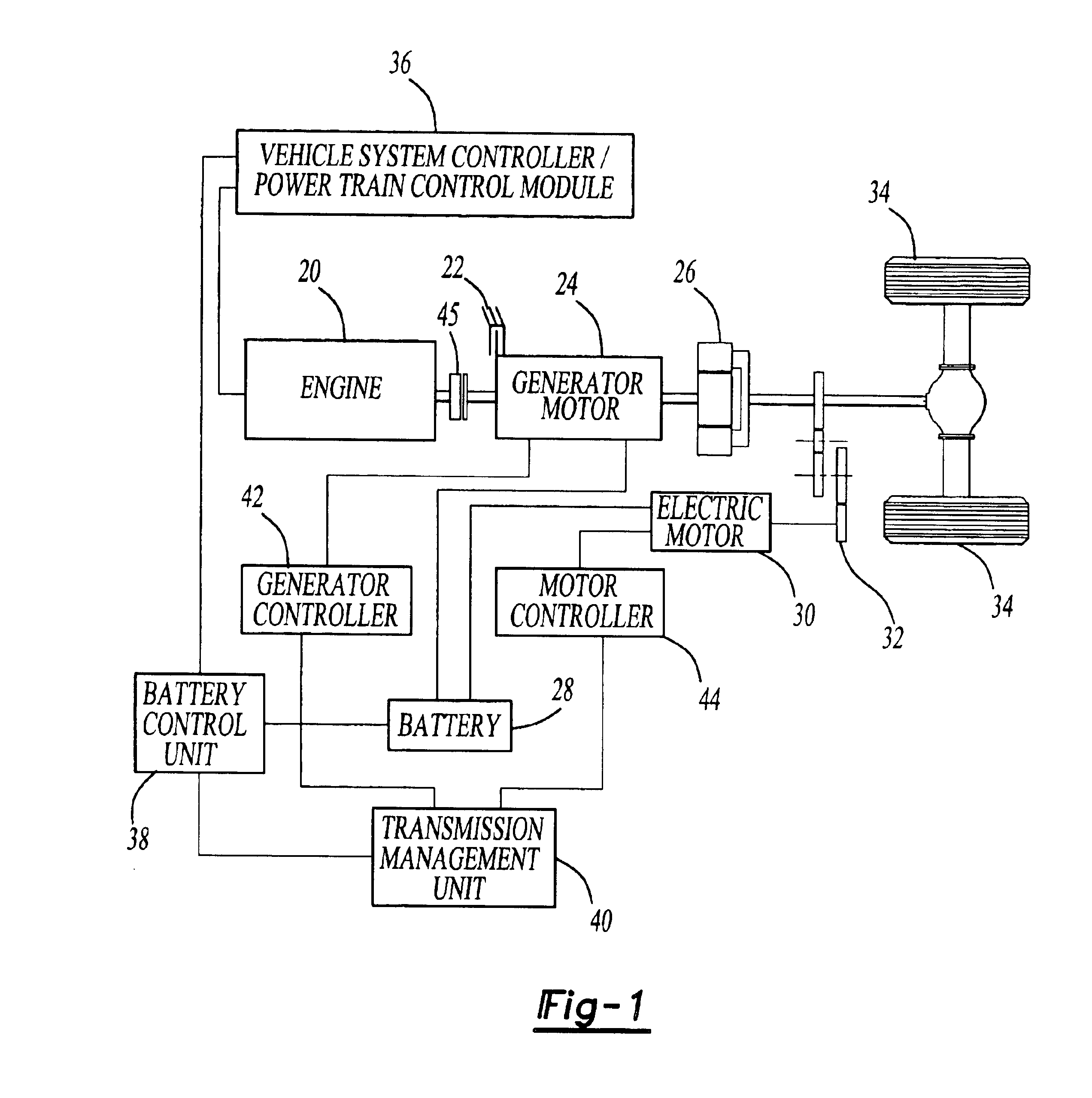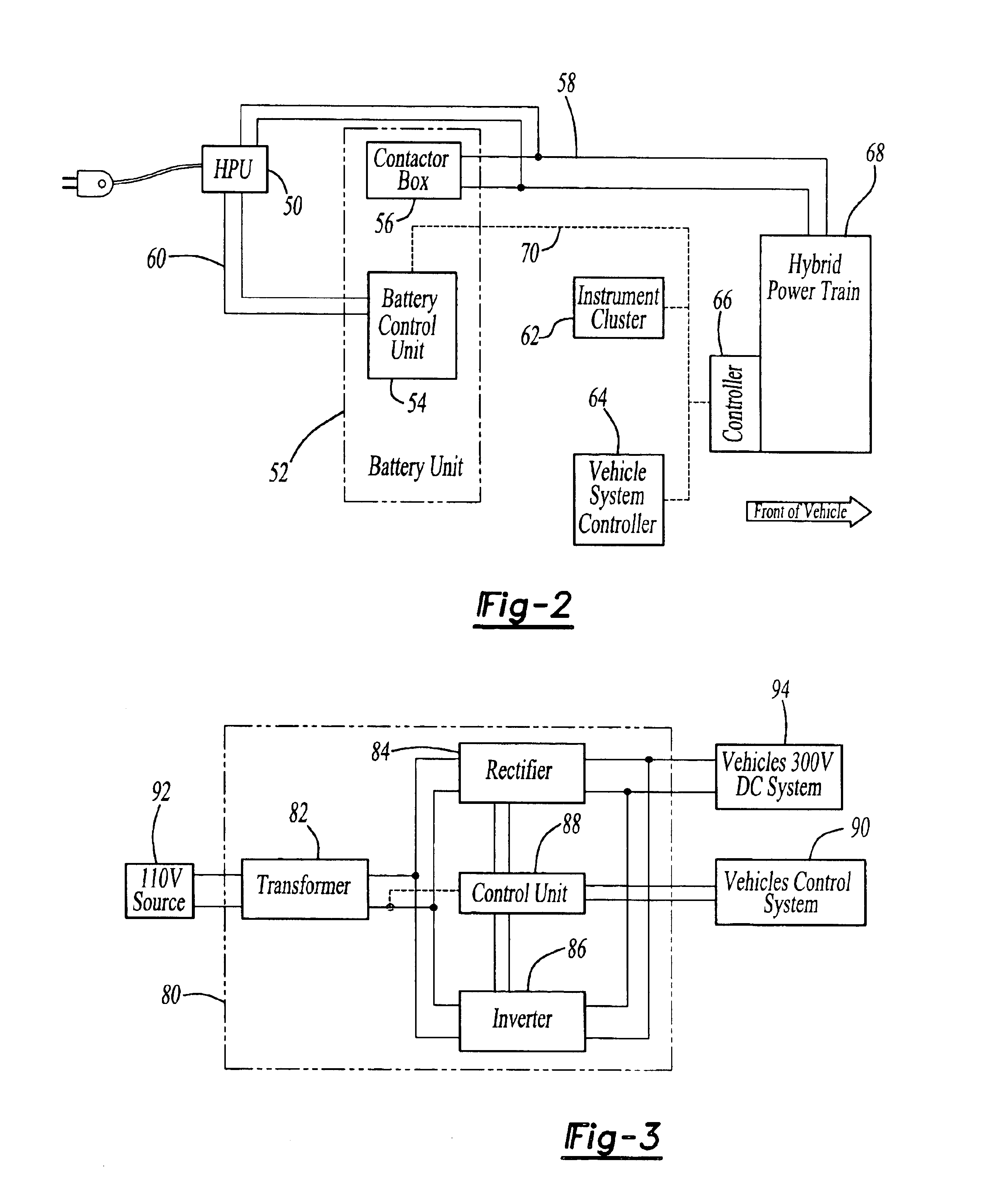HEV charger/generator unit
a charger/generator and electric vehicle technology, applied in the direction of engine-driven generators, propulsion parts, electric devices, etc., can solve the problems of affecting the service life of the battery, the substantial time needed to recharge the battery, and the loss of all batteries
- Summary
- Abstract
- Description
- Claims
- Application Information
AI Technical Summary
Benefits of technology
Problems solved by technology
Method used
Image
Examples
embodiment # 1
Alternative Embodiment #1
In an alternative embodiment, the HPU utilizes vehicle to avoid component redundancy. Specifically, this embodiment provides a means for using the HEV as a "generator" without adding a separate HPU unit to the vehicle.
FIG. 4 illustrates this embodiment. A Generator 100 is connected to an engine (typically in ICE) to generate electrical power. The Generator 100 is connected to a Generator Inverter 102 which converts the AC source to DC. Both the Generator Inverter 102 and a High Voltage Battery 106 are connected to a DC Bus 104. The DC Bus 104 is also connected to a Traction Inverter 108. In a normal HEV, the Traction Inverter 108 then connects to a Traction Motor 116; however, the present invention, in an attempt to utilize the components previously described would add a Contactor 110 between the Traction Motor 116 and the Traction Inverter 108. The Contactor 110 would then be connected to a Filter 112 which is connected to a Transformer 114. The Transformer...
embodiment # 2
Alternative Embodiment #2
In a second alternative embodiment, different HEV components are used to achieve the same HPU results. FIG. 5 illustrates the second embodiment.
A Generator 130 is attached to the, engine to help generate electrical power. The Generator 130 output is feed to a Generator Inverter 132 where the electrical power is converted to DC. The Generator Inverter 132 and a High Voltage Battery 134 are connected to a high voltage DC Bus 136. The DC Bus 136 is then connected to a DC-to-DC Converter 138. The DC-to-DC Converter 138 converts the high voltage DC source to a low voltage DC source (300 volt DC to 110 volt DC). The DC-to-DC Converter 138 is then connected to an Inverter 140 to convert the DC source to AC (110 volt DC to 110 volt AC). The Inverter 140 is then connected to a Filter 142 to remove any signal noise. Finally the Filter 142 can connect to any external electric device.
In this second embodiment, power is drawn through the dedicated DC-to-DC Converter 138 ...
PUM
 Login to View More
Login to View More Abstract
Description
Claims
Application Information
 Login to View More
Login to View More - R&D
- Intellectual Property
- Life Sciences
- Materials
- Tech Scout
- Unparalleled Data Quality
- Higher Quality Content
- 60% Fewer Hallucinations
Browse by: Latest US Patents, China's latest patents, Technical Efficacy Thesaurus, Application Domain, Technology Topic, Popular Technical Reports.
© 2025 PatSnap. All rights reserved.Legal|Privacy policy|Modern Slavery Act Transparency Statement|Sitemap|About US| Contact US: help@patsnap.com



